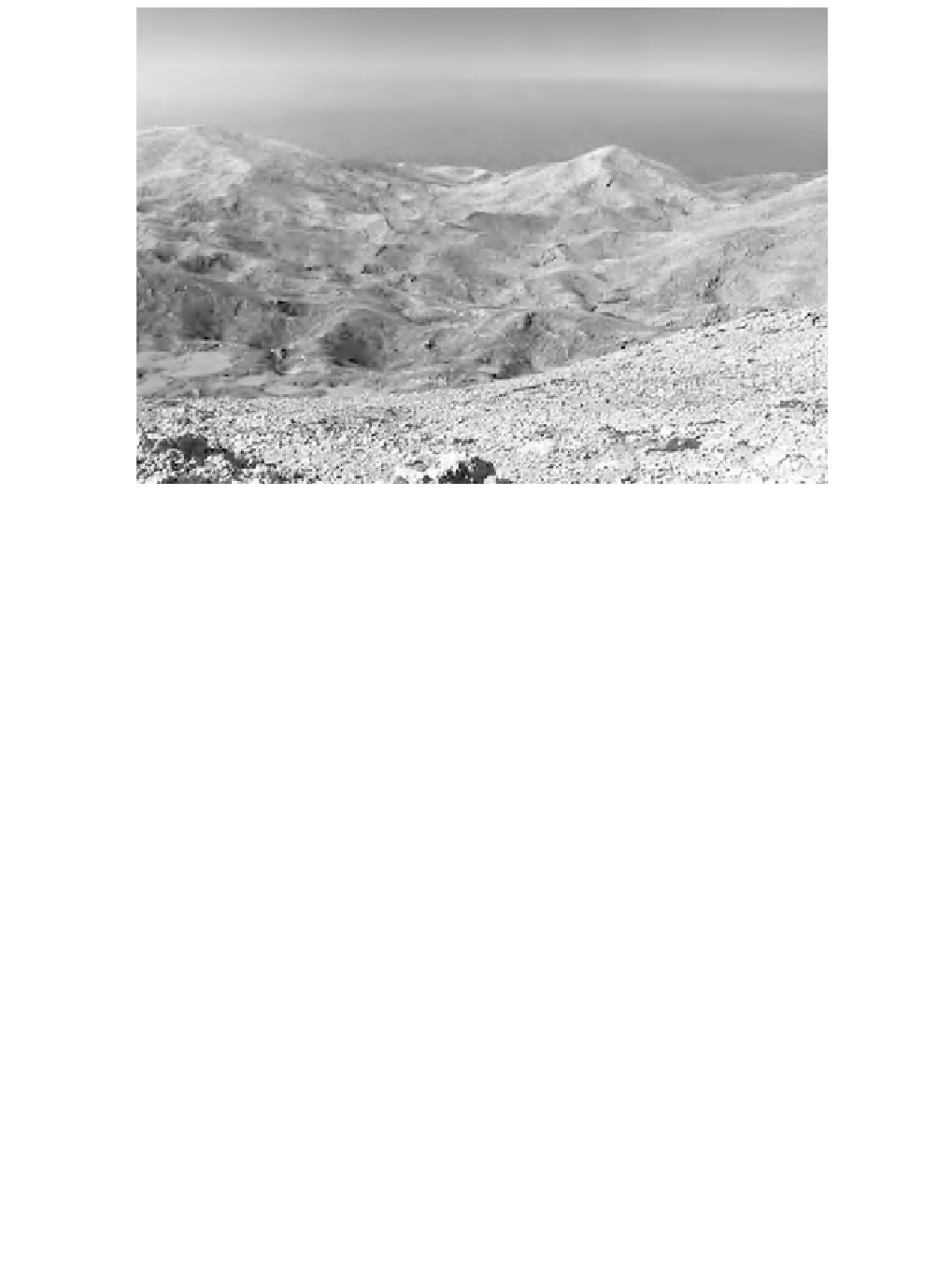Environmental Engineering Reference
In-Depth Information
Figure 6.4
Dolines on the central Lefka Ori massif, Crete (photo by the author). (
A full colour
version of this figure appears in the colour plate section
)
may occur in dolines on compressed soils, restricting growth to a few specialized
plants in the centre and more diverse vegetation confined to the doline edge. In dry
dolines, the established vegetation, mainly comprising chamaephytes, hinders soil
compression. The hydrological conditions are optimal for plant growth with high
water uptake and storage capacity (Egli, 1989).
Plants growing in unfavourable environments have adapted to allow them to sur-
vive the harsh conditions, and this is also true for alpine plants. The main limiting
factors in the alpine zone are temperature extremes, prevalence of strong winds
and the very short growing season (Tivy, 1993). Therefore, many plants in alpine
mountain zones are characterized by a low (cushion-like) growth form, which
protects them from the strong cold winds and allows them to survive on the ground
surface where the temperatures are higher. Alpine plants tend to be perennials
rather than annuals, in order to cope with the limited growing season. For example,
in the mountain areas of Greece this is the predominant lifeform followed by an-
nual, woody/suffruticose taxa (Table 6.3). Extensive root systems, which facilitate
nutrient uptake and water retention during droughts, are also common (Nagy and
Grabherr, 2009). Apart from the harsh physical environment, grazing is one more
'obstacle' to plant survival in mountainous regions. Plant species adapt to grazing
in many ways. Most of them have protective spines on their stems or leaves, or
contain substances that make them unpalatable to grazing animals.

